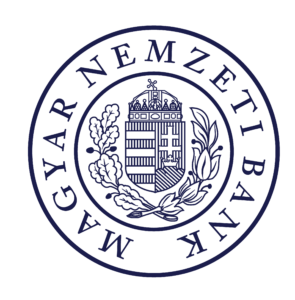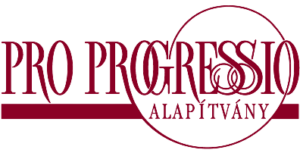Hedvig Vranek graduated in 2022 from Faculty of Creative Industrial Design at the Budapest Metropolitan University (METU) holding a bachelor’s degree in Fashion Design, and she is currently completing her master’s degree in Textile Design at the same university. She has already had her own exhibition, she has been involved in several fashion shows and other display shows, and she has done her internship at Daalarna Kft, and at Je Suis Belle. In BME’s Art Residency Programme, she has been working under the supervision of György Károly in a project entitled “The transient charm of decaying chaos”.
What motivated you to apply to the BME Art Residency Programme?
I really would like to try something different both at the level of inspiration and implementation. What appealed to me in this programme was the challenge of having to design a garment for something so foreign to me.
During your internships you have already worked with renowned Hungarian fashion brands such as Je Suis Belle or Daalarna. What experience and skills did you obtain at these places that you can possibly make use of in the residency programme?
The truth is, at both places where I worked as an intern, I was given smaller chores that required meticulous work such as hand embroidery, beadwork, button wrapping – so I have learnt how to work more carefully, which might be a great plus in this project, too. The greatest benefit was that now I can see the difference between a small and a big company. Here, my task will be completely different: I will have to prepare a garment to meet specific visual requirements. I usually stick to design and what matter to me most are function and wearability.
You have participated in various fashion shows with your own artwork, e.g. the METU’s Diploma Show in 2022, the fashion show “Terike from Budapest” in the same year, or the MNG Art Deco show. What sort of similarities and differences do you think your new exhibition will have in contrast with the previous ones?
In my past projects, it was absolutely indispensable that I complied with the design requirements. In this programme, I will be using forms and techniques different from the previous ones, and by relying on the practical experience I have gained, I will try to combine and further develop these forms and techniques. Because in this project I will focus my design on the motion of the human body and its relationship with the garment itself, we will ask a dancer to participate who will not only be involved in the presentation of the end product, but also in the planning phase. She will help me identify specific motions that best interact with the garment. The show where the garment will be presented will therefore be more like a performance.



What inspirations do you usually have when preparing a design? And what inspirations are you hoping to get for this garment in particular?
I always need a very strong basic idea that I can use as a starting point. It always has to be related to some contemporary issue. My favourite projects have all been built upon topics of fine art. Now I had to identify keywords related to chaos theory in order to have something to start with when designing the basic forms for this project. These keywords included creasing and folding. The garment will be designed to express stark contrasts. I translated the butterfly effect into my own native language because I will have to present this effect in the language of textile. I also need strong visual inspiration, and my supervisor, Gyuri Károlyi provided me with such visuals: he sent me fluid flow simulations.
Could you mention any fashion designers that inspire you?
I generally take a good look around in the profession before I start a new project; we were taught how to do what you call ‘trend research’. I like Issey Miyake, for instance. For the BME programme, however, I intentionally did not make any preliminary research because I want this project to be thoroughly unique, and only related to the underlying scientific principles.
During the residency programme I would like to create an artwork I refer to as an “object garment”, which will help us study the relationship with the garment and the motion generated by a human body wearing it.
What challenges do you expect to face when preparing the artistic garment as opposed to the principle of wearability?
In fact, I have never created a garment of this magnitude so I expect there will be great challenges in the implementation, such as how much the sewing machines can undertake, and such issues. Right now, my major concern is which material I should choose, because I am looking for something that is rather light but rigid and flexible at the same time. I still haven’t found what I’m looking for. I will need to figure out which are the two materials that can be neatly combined in a way that they kind of flow into one another and, despite their differences, they don’t diverge too much either.
To prepare a dress pattern for a garment like this is way more difficult than for a piece of street clothing, partly because the scope of interpretation here is very broad. I really like spending time with working on dress patterns for garments. And now I would like to merge the usual patterns with what I have just seen in the field of physics, i.e. the lines of fluid flow, so this phase of the work is definitely not going look like classic design. There is a specific technique referred to as draping; here designers can shape fabric directly on a dress form to create garment prototype, – I will start with this and will complete the dress pattern later.
How are you planning to find the balance between aesthetics and functionality in this project?
For an object garment wearability is not a priority, but it should fit on a human and now I will really have to make sure that it should be comfortable because the person wearing it will also be dancing.
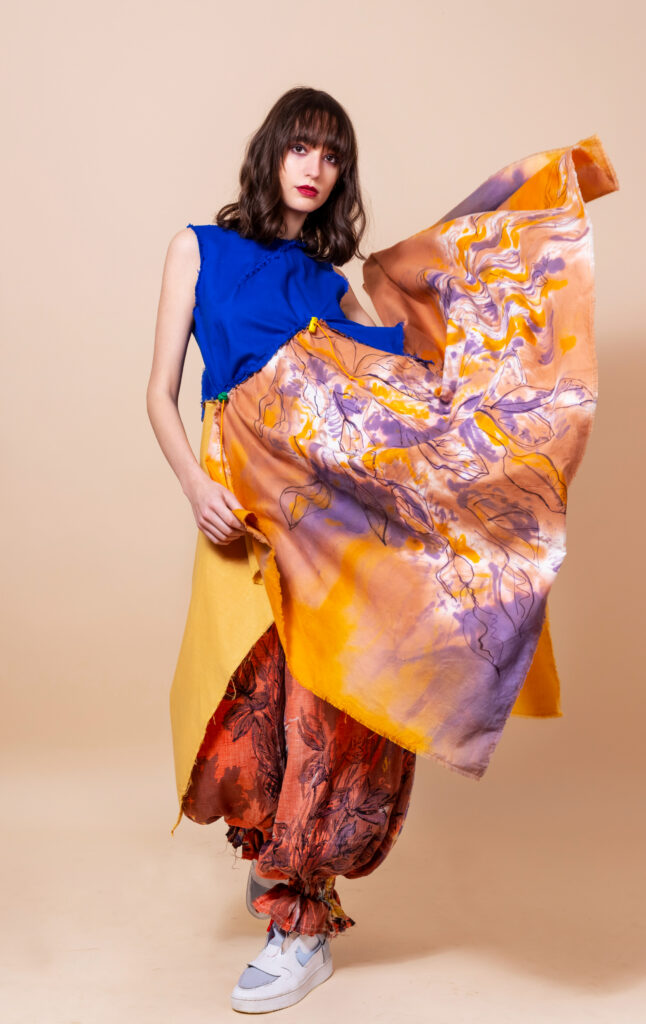
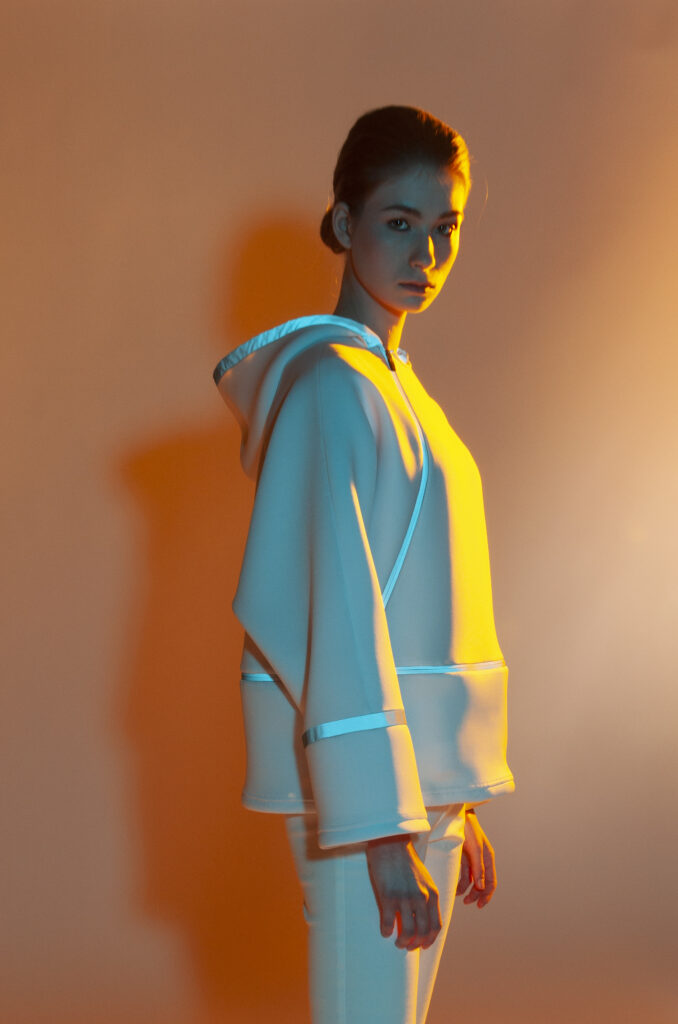

You always say that fashion should be environmentally friendly and sustainable. How are you planning to consider these principles during the design process and for the final product?
The key aspect will be the usage of the material(s), and to generate as little waste as I possibly can. It will very much depend on the final dress pattern. I once had a project where I looked into the process of collecting artworks. I was inspired by a couple, both art collectors, who described to me the process of collecting works of art. Collection is a long process; you have objects to start with and you keep adding new items as if you were completing a big puzzle. Every new item has a new story behind. In this project, I collected a lot of different materials from a large number of acquaintances and along with the materials I already had I incorporated all the elements into a new garment, so the end product was made up of components each of which had a different story to tell. We, small designers, cannot really influence the whole fashion industry but with our own individual approach we can do a lot for sustainable fashion – for instance, we may refuse to buy new clothes and use what we already have, and if we buy something new, we go for high quality.
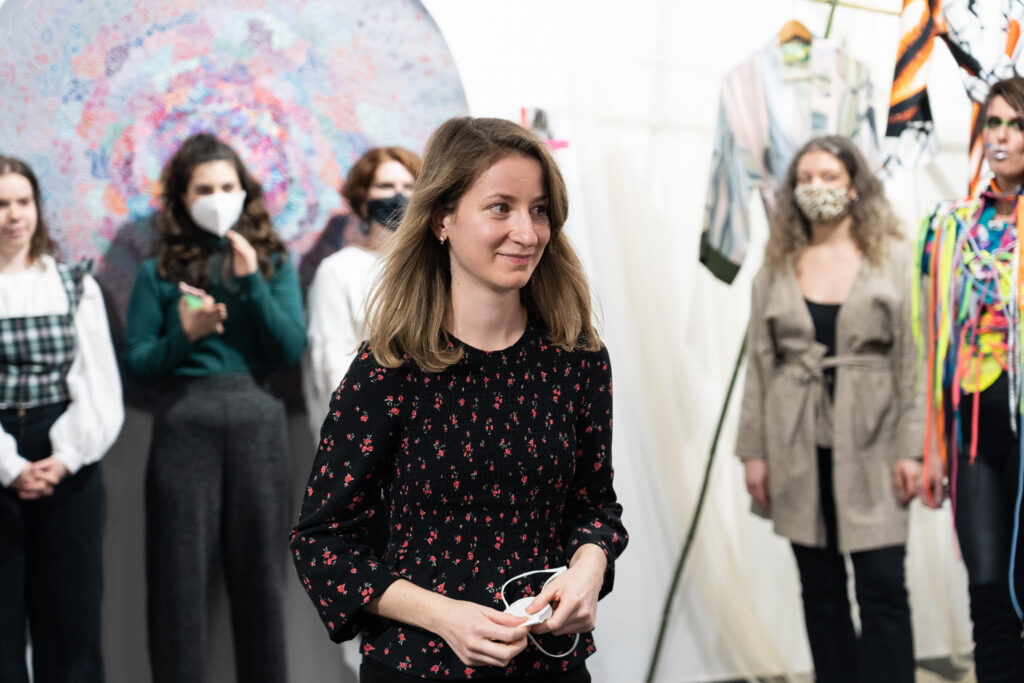
Hedvig Vranek is currently completing her master’s degree in Textile Design at the Budapest Metropolitan University (METU). She started her career at a secondary school for arts, then went on to study fashion design at a bachelor’s programme at the Budapest Metropolitan University (METU). She is creative and is dedicated to sustainability. She has had quite a few exhibitions; she has been involved in various projects and has gained valuable experience with fashion companies. During the residency programme, she will be working on an “object garment” which will be designed to show the relationship between the garment and the motion generated by a human body wearing it. Hedvig Vranek’s portrait is available at this link.
Bettina Odegnál
Pictures: Franciska Wittmann, Rebeka Ráhel Petkó
